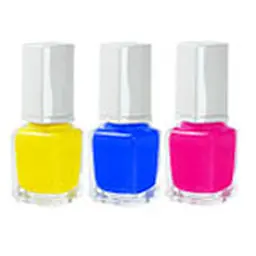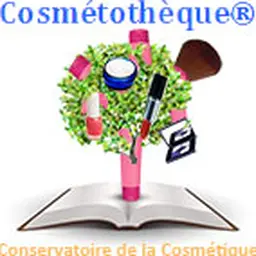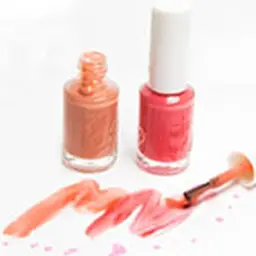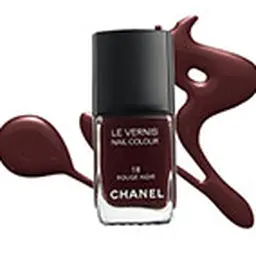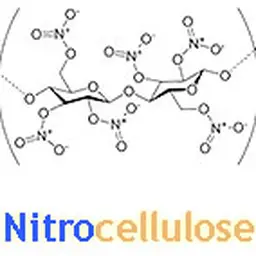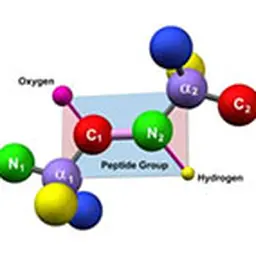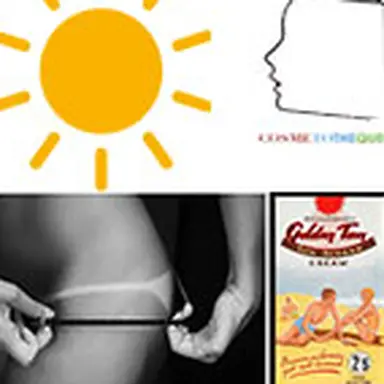
The history of sun protection products is not lacking in spice. These products, which were placed on the market without yet existing methods for evaluating their efficacy, constitute a class apart from other cosmetic products. If the part of dream is undeniable and well excusable in the field of anti-aging (to find its skin of baby is surely illusory) or slimming (to gain x sizes of pants thanks to(e.g., for the exclusive and assiduous use of cosmetics is perhaps presumptuous), the dream is forbidden with regard to this type of product whose effectiveness rhymes with health. In order to better understand the issues in question, we propose to draw up a quick overview of a product that alone triggers passions.
The sun was, for a long time, fled by the wealthy classes who saw in the tanned complexion the sign of a low extraction. Royal or imperial courts, courtesans, bourgeois women fought foot to foot to maintain the quality of their complexion, from Antiquity to the very end of the 19th century. To maintain a pale complexion, sunburn (by far the most effective solution!), clothing protection or fashion accessories (parasols, wide-brimmed hats) are used.
Other less harmless solutions can also be used: preparations containing ceruse to depigment the skin, bled intended to give to the face a marvellous air alangui as emptied of any life (Mrs. d'Esparbès, mistress of the count d'Artois will have recourse to this practice to fidéliser her lover volage). So many practices used to sacrifice to the fashionable criteria of beauty. Ready for anything, indeed. Examples are there to attest to that. The fashion victims (literally) are not the panacea of the 21st century. In the 18th century, the beautiful Marie Gunning used and abused bleaching preparations which made the press headline when she died in 1760:"Comtesse de Coventry: victim of cosmetics". Seven years later, actress and courtesan Kitty Fisher also died of lead poisoning. This metal will be talked about for a long time to come. C. Cotton Kenneby and H. Audrey Lynas of Royal Victoria Hospital of Belfast, in 1949, in the journal The Lancet a sad observation. Cases of lead poisoning following the application of cosmetics are regularly mentioned in the medical press, whatever the country or continent considered.
1900-1930
The first sun protection products appeared in the 1930s: oily forms, creams with no efficacy indicators… and for good reason. We discover both the joys of tanning and its unpleasant consequences: sunburn. The first sun protection products must therefore be placed on the market.
The paternity of tanning is often attributed to Coco Chanel. The paid holidays of 1936 are also advanced… It is obviously difficult to date precisely a fashion that has gradually imposed itself. A quick study of the literature allows us to realize the change in mentalities that is taking place and to return to Caesar what belongs to him. Although presented as the spokesperson for tanning, Coco Chanel is in reality only one personality among many who has dedicated himself to the cult of the sun. As early as 1902, André Gide became the tanning singer. Michel, the hero of The immoralist, suffers by comparing his dumb body to that of the Italians he met in the Amalfi region. " The sight of the beautiful tanned skins and as if penetrated by the sun, which the open jacket showed, working in the fields, a few untidy peasants, encouraged me to let myself be tanned in the same way ". Michel has just come out of a long illness that still leaves him well shaken. Considering the lamentable state of"the discoloration" of his skin, he decides to give his body to the"family". flame" of the sun. It can then be wrapped by "a delicious cooking "who will not fail to make him look like the beautiful Italians taken as models. The sun is sought after both for its aesthetic and therapeutic virtues. If Marcel Proust is to be believed, as soon as the First World War ended, we began to see on the beaches"the the beautiful unfolding of the virgins, both golden and pink, cooked by the sun and the wind, […], with beautiful legs, soft waist […] ". ( In the shade of the young girls in bloom, 1919). As for Jean Cocteau, who cannot stand his physique, he devotes a real passion to the sun, the only one capable, according to him, of embellishing it. " Make my body tanned, salty / make my great pain go away / […] Sun, I bear your blows / your big punches on my neck " ( Battery, 1920). " You gray better than opium "The famous opium addict says, demonstrating that exposure to the sun is more an addiction than an aesthetic concern.
1925 was the year of glory for Josephine Baker who triumphed in Paris in the Revue nègre. Her mestizo complexion is a sensation. She was unaware that 70 years later, her complexion would be considered the reference to reach. Tanning is a means of seduction… that is not reserved for women alone. Tanned complexion, sporty look… that's what you'd expect from a manly husband. Poor Raimu can't fight the man who took his wife. Abandoned by his wife Aurélie, Marcel Pagnol's baker ( The Baker's wife, 1938), takes up the cause of the one who betrayed him. Aurélie still deserves better than an old belly craftsman. " A woman as beautiful and as young as her must have a beautiful husband: young, muscular, young, tanned, young, intelligent, young…" . The choice criteria are thus in order, youth (youth is already underlying), strength, wearing a tanned complexion and finally intelligence. Aurélie will not be mistaken, she will return to her loving old husband, just like the cat Pomponnette who returns unfailingly, in her home, after each escapade in love.
1930-1960
The pharmacist René Cerbelaud has been compiling various cosmetic formulas since the 1900s. He dedicates an entire chapter of his work " Perfumery Form "(1930 edition) to sun protection products. He rightly distinguishes two categories of creams: fat creams and non-fat creams. Each category of creams is presented under a rather long title that explains in which case they can be used, a title that often makes today's reader smile. Reference is also made to the manufacturing protocol. There is obviously no reference to the FPS ( Sun Protection Factor ), this concept does not yet exist officially. Note that for some formulas, René Cerbelaud uses the term"cream". recommendable ". We can assume, in this case, that these creams were tested by René Cerbelaud himself and that the qualifier" advisable "has been attributed to creams with interesting organoleptic characteristics.
Examples include: in the category:". Sunscreen creams based on greasy vehicles suitable for people who do winter sports, on snow or glaciers, or mountain excursions in the summer: because these sports cause an abundant sweating that would partly remove non greasy creams "sunscreen creams that do not let ultraviolet rays through - recommended formulas.
| Ingredients | Q uantity |
| Basic quinine hydrochloride | 2 g |
| Urethane or ethyl carbamate | 1 g |
| Urethane or ethyl carbamate | 75 g |
| Distilled rose water | 20 g |
| Concentrated extract for cologne | 0,5 g |
R. Cerbelaud
There will also be opaque sunscreen creams containing powders such as titanium dioxide, zinc oxide and kaolin. Only simple formulas with few ingredients are available. Weapons to combat ultraviolet radiation are very limited.
1946 A young chemist named Franz Greiter markets a solar product invented a few years earlier, under the name"Crème des glaciers", from the brand Piz Buin, in memory of the sunburn he suffered after climbing this alpine summit. A few years later, he declared himself the inventor of the SPF index ( Sun Protection Factor ) index which will be, later, worldwide recognized.
1950 The marketing of the first self-tanning products maintains a cacophony as regards the message to be conveyed. The history of this category of cosmetics can be written in 3 dates: - 1920: a discovery;
- 1950: the exploitation of this discovery and the birth of a new category of products;
- 1960: the first self-tanners are launched on the market. The history of dihydroxyacetone (or DHA) begins in 1920. It is then used as a glucose substitute for diabetics. In 1950, pediatricians at the Cincinnati Hospital used this molecule to perform a tolerance test for glycogen storage related diseases. A colouring of the skin in the regurgitation areas of treated children suggests cosmetic exploitation of this ingredient. DHA solutions are quickly made for topical use the observed result is the same. It is then understood that DHA reacts with the amino acids present on the skin surface to form coloured complexes. The late 1950s saw the birth of this type of innovative product in the United States. The reception however remains mixed because the colour obtained is very often orange and the application makes difficult the colouring of the skin rather uneven. When you leaf through the women's magazines of the time, you are faced with a veritable jungle of sun products and self-tanning products. The vocabulary used is far from clear. Most sun products evoke tanning. This is the one that is mentioned first, before any notion of protection.
| Solar products | At t tanning products |
| Sun Tan Lotion, Quick Bronze (Helena Rubinstein) | Tan in a minute (Helena Rubinstein) |
| Sun Bronze (Charles of the Ritz) | Segor (Antoine) |
| Brunior (Antoine) | 200 solar end (Elizabeh Arden) |
| Browning cream (Lancaster) | Crystal Tan, Permanent Bronze (Harriet Hubard Ayer) |
| Spray Tan (Rigaud) | |
| Tan a sol (Orlane) | |
| Bronze Beauty (Gemey) | |
| Oléo-Bronze (Fernand Aubry) | |
| Oil for browning (Guerlain) |
Solar or self-tanning products, how to recognize yourself?
The filters available are not very effective. These include salicylates (phenyl salicylate, triethanolamine, glyceryl salicylate…), quinine sulphate, isobutyl para-aminobenzoate… In a brochure entitled"…. Beach and mountain hygiene "René-Maurice Gattefossé and a number of fellow chemists reviewed their knowledge of the subject in 1947. The chemical engineer Mahler concludes prophetically:"… It is true that the study of filtering bodies is far from having said its last word and that the work which continues, based on precise spectrographic methods, reserve us the development of sunscreens even more effective than those known up to now. "It will, however, take many years to formulate successful products.
The 1970s
Decisive years in the life of sun protection products… The determination of the Sun Protection Factor (SPF) using a panel of volunteers was considered by Robert Sayre, in 1978, as the technique of choice for determining the effectiveness of sunscreen products. He then drew on the work of Willis and Kligman (1970) and Cripps (1974). It links this protection factor to the transmission of"effective erythematogenic light" (SPF = 1/T effective ). Indeed, the more the sun product absorbs harmful radiation, the less it transmits it. The protocol can be implemented, according to him, inside, using a xenon arc lamp, or outside with constraints related to meteorology therefore much more random. Robert Sayre is at the origin of the relationship SPF = f(T) later taken over by Bryan Diffey. However, the life of sunscreen products does not flow like a long quiet river. As early as 1969, Guinter Kahn and George Wilcox posed the problem of the wide variety of tests used by industrialists and researchers in determining the effectiveness of solar products. They aspire to the development of a method that is easy to implement and reproducible. They review the results obtained with ten commercial products using seven different determination techniques (six methods in vitro and a method in vivo ). They already point out the difficulties that may be encountered. Concerning the volunteer, his skin characteristics vary according to genetic criteria, according to his age, his lifestyle… As for the products tested, their physico-chemical characteristics (viscosity, stability, light diffusion…) are all parameters to be taken into account. Applied dose and media used are also important considerations. Without knowing it, these two researchers lay the foundations for a debate that will last for many years. The products marketed then display low indices (3, 6, 20, high maximums). The emphasis is always on tanning. More than a protective effect, the consumer is promised an ideal tan. Bergasol products based on bergapten, although known as a photo-sensitizing agent, are part of this logic. We want to tan at all costs… We tan at all costs…
From 1980 to 1990
This decade saw the indices of sun protection products gradually increase and the appearance of a fashion that still continues today: that of photoprotective make-up products.
1990
Carole Franck creates a solar foundation (IP 3); the index is certainly low but we can already note that the idea of daily sun protection is taking shape.
1994
COLIPA (Comité de Liaison des Industries de la Parfumerie), now Cosmetics Europe, establishes a protocol for the determination of the SPF
in vivo
. Details are given as to the emission spectrum of the lamp to be used; selection criteria for volunteers (belonging to three phototype groups) are retained. The applied dose of PPS is set at 2 mg/cm
2
.
1995 Paula Bégoun, intuitively declares herself in favour of the use of skin care and/or make-up products with a sun protection factor greater than or equal to 15.
1997 Sophie Seité, from L'Oréal's Research and Development department in Clichy, publishes with her colleagues the results of a study carried out over six weeks on 12 healthy volunteers of phototypes II and III. They will be exposed to a solar simulator five days a week for six weeks at one EMR (Minimum Dose Erythematogen) per day. The irradiated part is the buttock. Different zones have been distinguished: one control zone is unirradiated, it serves as a control; three other zones are provided: one is irradiated but not treated, another is irradiated and protected by a day cream containing three sun filters (Uvinul ® N539, Parsol ® 1789 and Mexoryl ® SX) applied at 2 mg/cm 2 the last one is irradiated and protected by a cream that does not contain a filter. Different histological and clinical criteria are evaluated. It shows that the daily application of a day cream of SPF 7 and UVA protection factor (FP-UVA) 6 is necessary and sufficient to reduce or prevent skin alterations related to sun exposure.
The 2000s
2000
The COLIPA method is the subject of reflection between different countries and continents (Europe, USA, Japan) in order to harmonize as well as possible the methods for determining the effectiveness of anti-solar products by method.
in vivo
. However, it will be ten years before consensus is reached. The ISO standard
24444:2010 is the witness of these debates. One year later, it will be supplemented by a second ISO standard (ISO
24442:2011) establishing the conditions for determining the UVA protection index.
The indices are getting higher and higher. It is not uncommon to find sun protection products on the market with a sun protection factor of 100, and a certain number of French dermatologists are reacting to this escalation of the displayed values, which only affects the UVB protection indices, and are calling for the implementation of specifications to be respected. It is not desirable for a sunscreen product to be very effective in the UVB range and not very effective in the A range.
2001
A publication in an eco-toxicology journal is confusing consumers. Margret Schlumpf, researcher in the Laboratory of Pharmacology and Toxicology at the University of Zurich, is interested in UV filters used in sunscreen products and their impact on the environment. For several years, she focused her research activity on the estrogenic activity of the ingredients in question, orchestrating a fear towards sun protection products and more broadly towards cosmetic ingredients in general. It classifies the filters studied in terms of estrogenicity. The significance of the results obtained by Margret Schlumpf should be put into perspective. Let us always bear in mind that benzylidene-camphor and benzophenone-2, which have a similar estrogenic character, are, according to him, about 700 000 times less active than 17-boestradiol, the reference molecule. Their impact on nature and man therefore remains to be proven. It seems surprising to openly incriminate UV filters in environmental disorders and human pathologies, without mentioning other possible sources of estrogen… By stigmatizing UV filters in this way, Margret Schlumpf makes a serious mistake. It affects a category of cosmetic products whose protective efficacy against skin cancers is no longer to be proven. The criticism of UV filters systematically presented as toxic and polluting"chemical filters" is taken seriously by the organic cosmetics industry, which hopes to see its market share increase in this way.
2006 The Commission Recommendation of 22 September 2006 on sunscreen products and manufacturers' efficacy claims is a reference text for cosmetic laboratories wishing to manufacture sunscreen products. It is no longer possible to display any SPF value. Four categories of protection level are selected: low, medium, high and very high. Eight values can be displayed: 6, 10, 15, 20, 25, 30, 50 and 50+. The recommended minimum UVA protection factor must be 1/3 of the sun protection factor displayed on the packaging. Recommendations regarding the application rate and the need for re-application are made. A number of claims that could give consumers a false sense of security should be banned. 100% protection against UV radiation (concept of total screen or total protection) and encouragement not to reapply the product (prevention during the whole day) are, of course, not desirable.
2007 Our research work, begun three years earlier, is bearing fruit. Until then, little information was available on the effectiveness of ACPs, as no academic team was working on the subject. Having developed at the Laboratoire de Pharmacie industrielle et de Cosmétologie (LPiC) a method of in vitro To determine the efficiency of PPSs reliably and quickly, we decide to compare the efficiency of the filters authorised at European level. To do this, we incorporate these filters in varying percentages in a basic excipient, an O/W emulsion, made by ourselves. For all the filters studied, the SPF increases with concentration to reach a plateau. It is therefore generally not necessary for the formulator to reach the maximum permitted concentration to obtain the optimal effect. In most cases, the SPF representation = f(c) corresponds to a second order polynomial. Another element to take into account concerns the photo-stability of filters. A comparison of the efficiency of the emulsions formulated with the various filters could be carried out before and after irradiation, this one simulating a solar exposure. After irradiation, the decrease in SPF over time follows an apparent first order kinetics for all the filters studied. We can distinguish two groups of filters: those that we will qualify as slightly photo-stable (t 90% < 120 minutes) because they lose more than 10% of their efficiency after two hours and those that we consider as photo-stable because they have a t 90% greater than 120 minutes. This value of two hours was chosen because of the advice given by the health authorities for the proper use of sun products. An application every two hours being recommended, any photo-stability lower than this duration will therefore be considered mediocre.
Subsequently, we are interested in titanium dioxide, an inorganic filter authorized up to 25% in sun protection products. It should be noted that this percentage cannot be achieved in practice because of galenic limits. Indeed, at this dose, we obtain a very consistent paste and not a really applicable emulsion. There are a very large number of titanium dioxide suppliers and, depending on the specialty under consideration, the percentage of active ingredient as well as the nature of the coating can be very different. Faced with this great diversity of raw materials available, it seemed interesting to us to draw up an inventory by comparing the effectiveness of the main inorganic filters available on the market. A total of 57 screens were studied. Inorganic filters were introduced at doses ranging from 5 to 25% (m/m) in an O/W base cream. Titanium dioxide is easier to handle than zinc oxide, which is quite difficult to incorporate. The hydrophilic forms were dispersed in the aqueous phase, the lipophilic forms in the fatty phase. The uncoated shapes were incorporated at the end of preparation. The trend curves SPF = f(c) correspond to second order polynomials.
We were thus able to demonstrate the superiority of titanium dioxide over zinc oxide (a filter authorised in Europe only a few months ago) in terms of efficiency. For example, the Eusolex TS ® is four times more efficient than the Z-Cote Max ® . Moreover, the micronization process, in addition to the comfort of application provided (disappearance of what we used to call the "Pierrot's mask "), increases the performance of titanium dioxide. By comparing the results obtained with titanium dioxide of a particle size of 200 nanometres usable as pigment supplied by LCW and those obtained with Eusolex TS ® with a particle size of about ten nanometres specifically designed for the formulation of anti-solar products, there is a multiplier factor of eight. This work has allowed us to show that it is currently impossible to produce biological or mineral products with values of 50 or 50+. Exclusive use of either of these mineral filters does not achieve high levels of protection. An association with organic filters is therefore essential if high indices are to be reached, which explains the filtering associations comprising five, six, seven or eight filters frequently encountered.
The history of protective products is a history always in writing. Looking at them, we probably wouldn't give them 70. There are many formulation requirements. It is necessary to limit to the maximum the phenomenon of transdermal passage and on the contrary to reinforce a surface action. If formulating a moisturizing cream is within the reach of a beginner formulator, it is not the same for these products likely to protect the skin from photo-induced cancers. The stakes are high and must never be lost sight of.
We owe this contribution to Laurence Coiffard and Céline Couteau They manage the LPiC or Laboratory of Industrial Pharmacy and Cosmetology of the Faculty of Pharmacy of Nantes. Born in the 1970s from the split of the Galenic Pharmacy Laboratory from the Faculty of Pharmacy in Nantes, the LPiC has been part of a logic of development of topical forms intended for both pharmaceutical and cosmetic use since its creation. This laboratory is also involved in training since since the creation of the Master 2 diploma, having succeeded a DESS, hundreds of executives have been trained in Nantes.
|
Contribution made by Céline Couteau and Laurence Coiffard They work at the LPiC or Industrial Pharmacy and Cosmetology Laboratory of the Faculty of Pharmacy of Nantes. Born in the 1970s from the spin-off of the Galenic Pharmacy Laboratory from the Faculty of Pharmacy in Nantes, LPiC has been part of the logic of developing topical forms for both pharmaceutical and cosmetic use since its creation. On the research side, different themes have been developed over time. The most important part of the investigations carried out in the 1980s and 1990s was the development of ingredients of marine origin through the characterisation of the composition of macro- and micro-algae (creation of a database called Biotekalg). Then, the study of the thermo- and photo-stability of different ingredients for cosmetic use preceded the current theme of the laboratory, namely the study in vitro the effectiveness of sunscreen products. This theme, introduced in the 2000s, currently results in some 40 international-level publications. This laboratory is also involved in training since since the creation of the Master 2 diploma, having succeeded a DESS, hundreds of executives have been trained in Nantes. |

